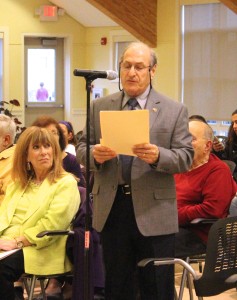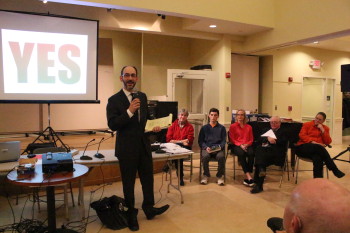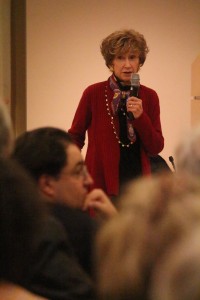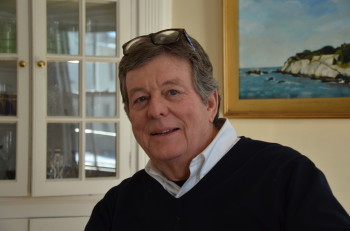Photo: Woodfall Road site.
The Belmont Board of Selectmen approved a purchase and sale agreement for the purchase of town-owned property at the end of Woodfall Road to a Lexington developer for $1,750,000.
Dani Chedid of Lexington’s Phoenix Construction Group will now begin the formal process of purchasing the 5.25 acre parcel adjacent to the Belmont Country Club and in the Hillcrest neighborhood on the west side of Belmont Hill, said Sami Baghdady, chair of the Selectmen at its meeting Thursday, May 28.
Chedid, the lead of a three-person group, outbid Northland Residential of Burlington (which constructed the The Woodlands at Belmont Hill) by nearly $1.5 million in December 2013 to begin working with the town on a final price tag for the property that will be home to four luxury single-family homes.
Seventeen months ago, Chedid offered $2.2 million of the site. Since then, the town – through Town Administrator David Kale’s office – and contractor have been negotiating a final price for the land after a long due diligence process that included environmental assessments, soil testing, monitoring wetland requirements and, at one point, discussions with the country club on the likelihood of golf balls flying onto the new homes, said Baghdady.
“Woodfall Road is a different site since the request for proposal,” said Baghdady, referring to the nearly half-a-million dollar reduction in the original offer.
“Yet even now, it’s a much better award than the $750,000 [Northland] offered,” he said.
The P&S now requires the town to present a “clean” title and for a state environmental test to be conducted. In addition, Chedid will go before the Belmont Conservation Commission to request a “side” order to allow some relief to build on one of the four lots due to wetland concerns.
A final purchase of the land, which has been on the market for more than a decade, should occur in the next two to three months, said Baghdady.




